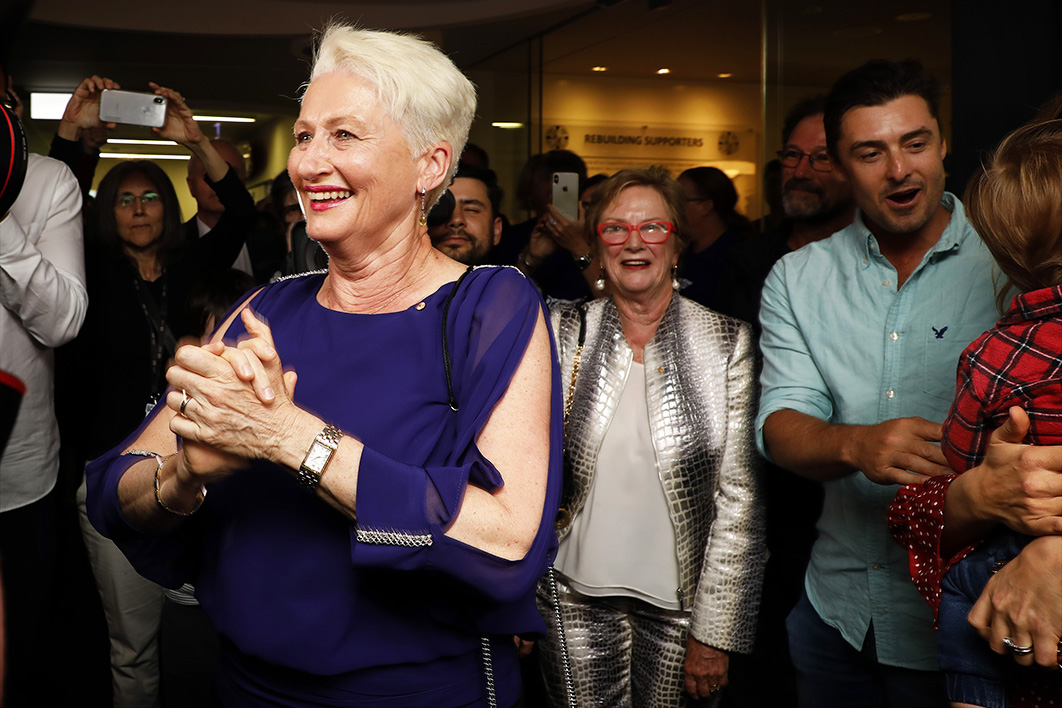The counting in Wentworth is not yet over, and there remains a good chance that postal votes will rescue Liberal candidate Dave Sharma. See Pollbludger and Tallyroom for details.
But assuming Kerryn Phelps becomes the Member for Wentworth, this awful result robs the Coalition of its House of Representatives majority. It caps off neatly a fortnight in which all the government’s hang-ups and ticks were on glorious display, including a bizarre Senate vote in favour of a Ku Klux Klan slogan, a prime minister debasing Sydney’s architectural icon in a ritualistic grovel to Sydney radio hoon Alan Jones and ludicrously playing the “Israel” card because, you know, this electorate has the most Jews in the country, and the junior party publicly ruminating about dumping its leader.
So, unlike most by-election results, this one matters. But even more than most it’s useless as a pointer for the next general election.
The first thing to be cleared up is that this was not, as is widely reported, the biggest by-election swing in federal history. There was no “swing,” because Phelps didn’t contest the 2016 general election.
What is being reported as the “swing” is the drop in the Liberal two-candidate-preferred vote, from 67.7 per cent against Labor at the last general election to (probably) around 49 against Phelps. So about 19 per cent.
If we call that a “swing” then the biggest by-election “swing” in history took place in — drumroll — Lyne in 2008 when popular state independent Rob Oakeshott stormed home following the retirement of Nationals leader Mark Vaile. Vaile’s two-candidate-preferred vote had been 58.6 per cent against Labor in 2007, but the Nationals candidate managed just 26.1 per cent against Oakeshott in 2008.
That “swing” against the Nationals was 32.5 per cent, but they were in opposition. The biggest such “swing” against a sitting government was in Wills in 1992, when independent Phil Cleary was easily elected after Bob Hawke retired. That one was 23.6 per cent.
But these weren’t really swings. The largest actual by-election two-candidate-preferred swing took place in Wakefield in 1938, with an estimated 20.1 per cent shift from United Australia to Labor, followed by Canberra in 1995, 16.1 per cent to the Liberals against the Keating government, Parkes in 1931, 15.6 per cent against that fracturing Labor government, and Bass in 1975, 14.3 per cent in the same direction.
In several weeks the Australian Electoral Commission will publish calculations of the actual Liberal–Labor two-party-preferred vote, and hence the swing from 2016, and that will probably be around 10 per cent. Give or take several per cent.
So folks fond of overlaying by-election swings onto pendulums to produce dramatic predictions for the next election must wait and use that figure.
The point of this apparent nitpicking is that while this result is a shocker for the Liberals, and Phelps (assuming she wins) will be difficult to blast out of the seat — likely to follow Andrew Wilkie, Cathy McGowan and Rebekha Sharkie (and Greens Adam Bandt) in going from strength to strength — it tells us as much about the next election as Lyne did about the 2010 one. That is, zero, apart from the likely outcome in a single seat, Wentworth.
That’s what we have national opinion polls for. •





